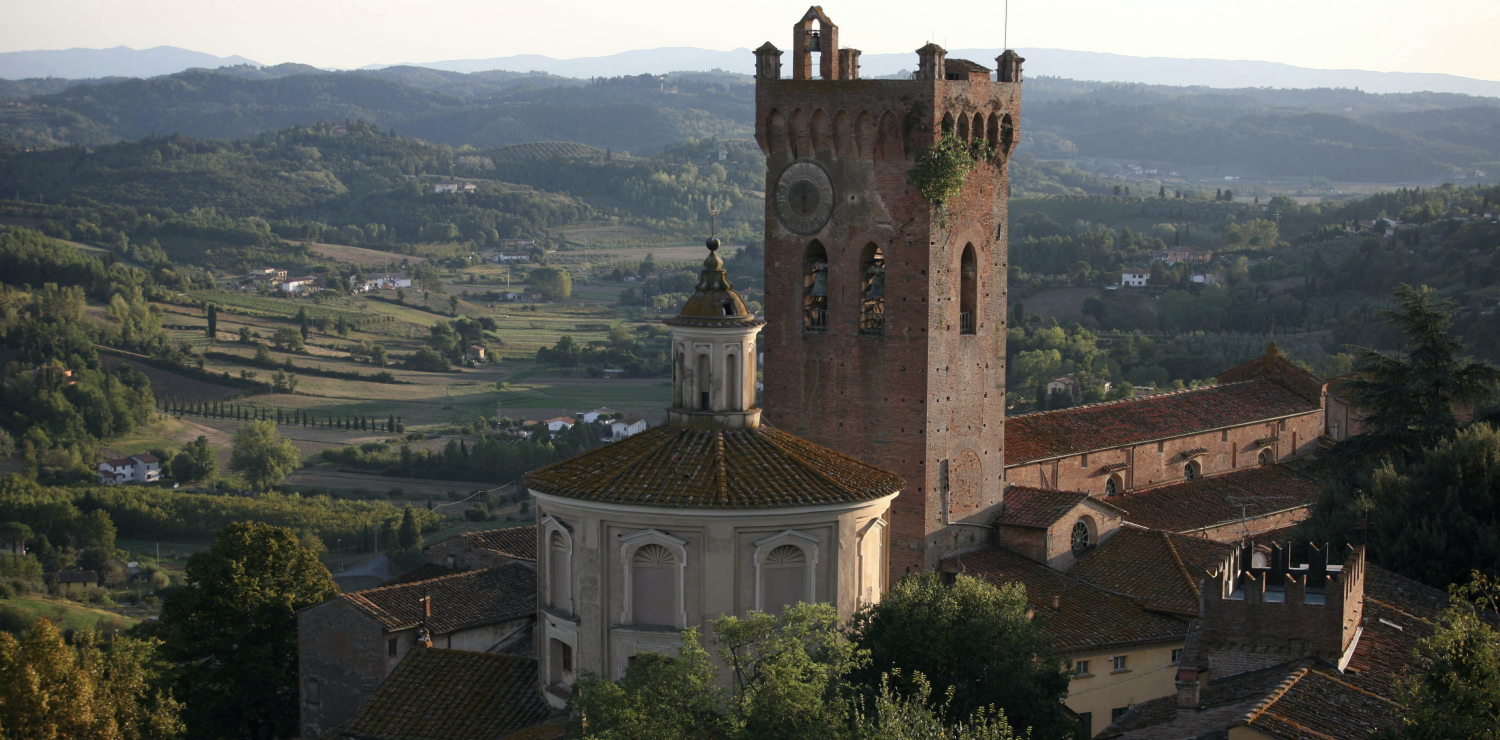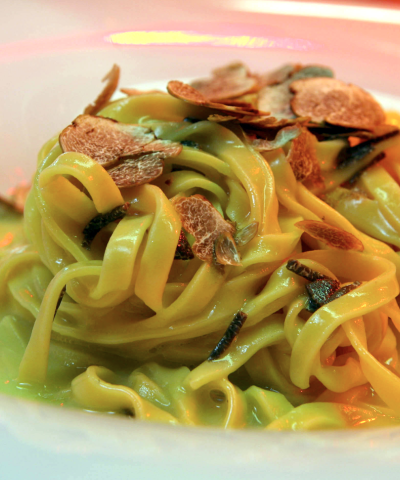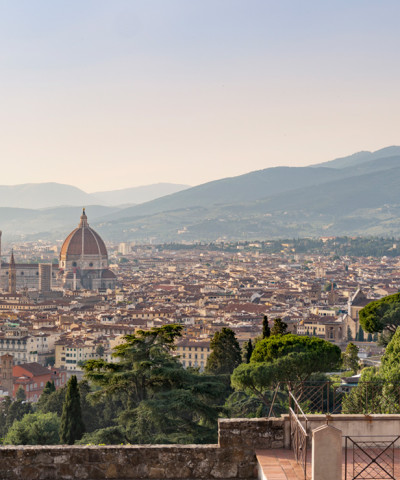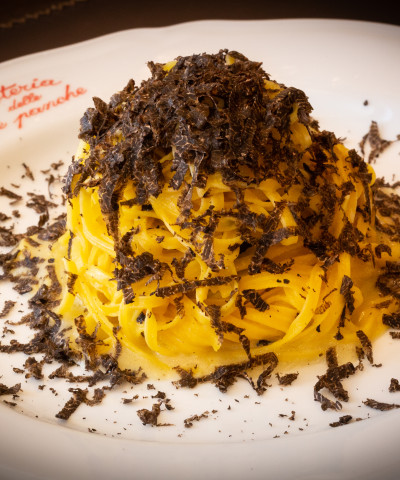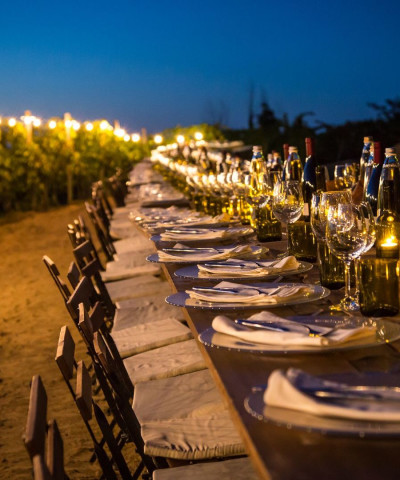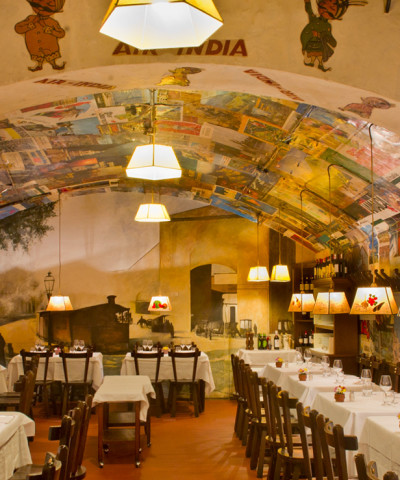What to see and where to eat in San Miniato
Restaurants, churches, museums and truffles: everything you must do and see
Situated at the crossroads of the Via Francigena and the road leading from Pisa to Florence, San Miniato is visible for kilometres. Built on the site of an 8th century church due to its strategic location, it enjoyed fame and prosperity in medieval times when it became the imperial residence of Otto IV and Frederick II.
Over the course of time, many illustrious people have passed through or stayed in San Miniato: Pope Clement VII, Michelangelo Buonarroti, Napoleon Bonaparte, Giosuè Carducci, as well as several German emperors (San Miniato was in fact also called 'San Miniato al Tedesco').
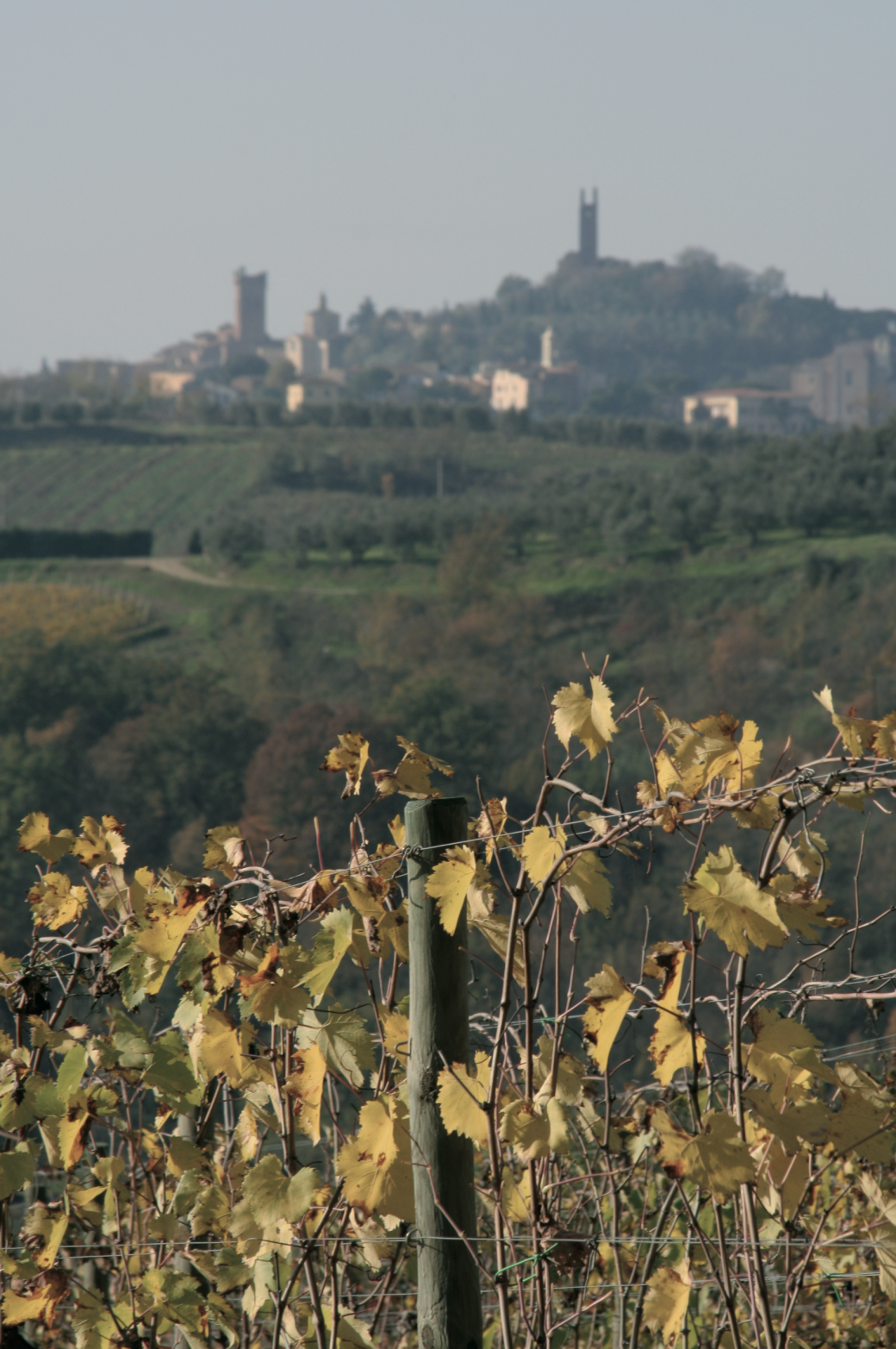 Veduta San Miniato con vigneto
Veduta San Miniato con vignetoWHAT TO SEE IN SAN MINIATO:
Rocca di Federico II
The city is dominated by its formidable Rocca, or fortress, built by Frederick II in 1240 and used as a prison for Pier delle Vigne. It was from there that the poet and once trusted minister of Frederick II threw himself to his death in 1249 after being accused (unjustly it seems) of treason, events described by Dante in the 13th canto of the Inferno. The steep ascent to the summit is rewarded with magnificent views of the city and surrounding countryside.
The Cathedral
The Cathedral of Santa Maria Assunta and San Genesio, better known as the Duomo of San Miniato, was built in the 12th century, probably on the remains of an older chapel, and retains its original Romanesque brick façade. In the 15th century it was enlarged and the bell tower, known as the Tower of Matilda, was built, due to the legend that Matilda of Canossa was born in the adjacent Vicari palace. On 22 July 1944, a US artillery shell penetrated the church and exploded in the right aisle, killing 55 people. The cathedral was full of citizens who had been rounded up in the parvis by the Germans.
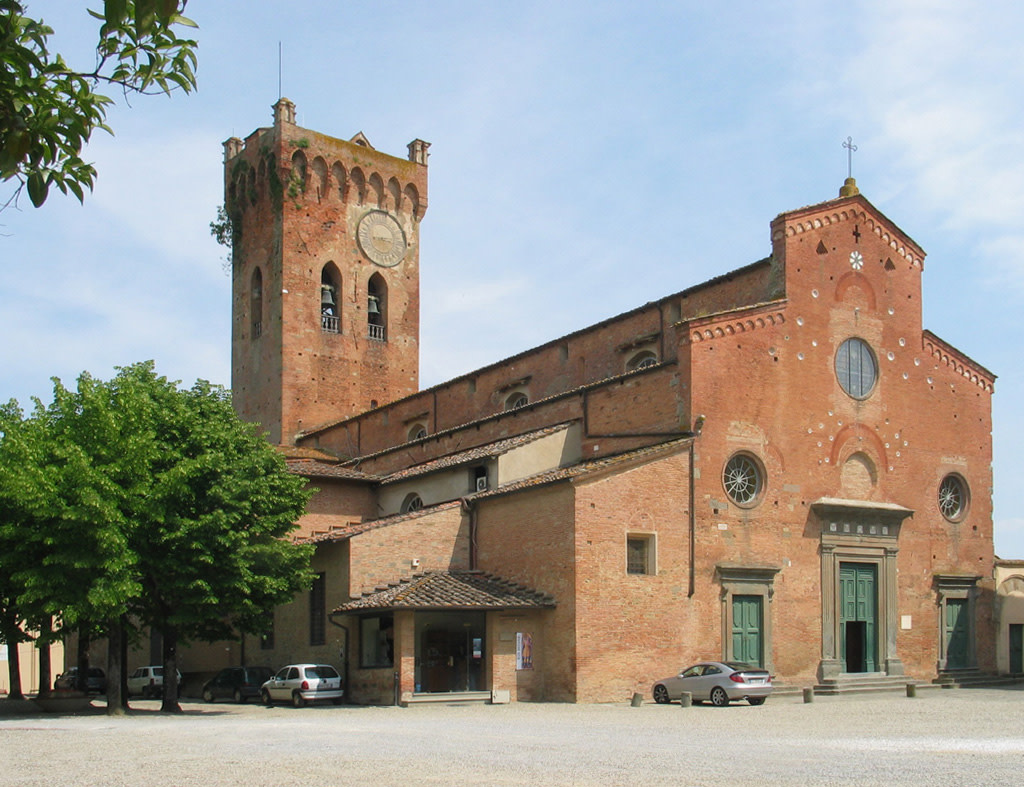 Duomo di San Miniato
Duomo di San MiniatoDiocesan Museum
Next to the cathedral is the Diocesan Museum, which houses, among other works, paintings by Neri di Bicci and Filippo Lippi and a terracotta bust of Christ by Verrocchio.
Palazzo Vescovile
In the Prato del Duomo square we find the Palazzo Vescovile and the Palace of the Vicars. The latter owes its name to the fact that in antiquity it was the residence of the Emperor's Vicars, those who controlled and administered the city. The Bishop's Palace, on the other hand, was built around the 13th century and still houses the residence of the Bishop of San Miniato. The palace has undergone many reconstructions over the centuries and even today we can see the difference in styles between the northern and southern façades.
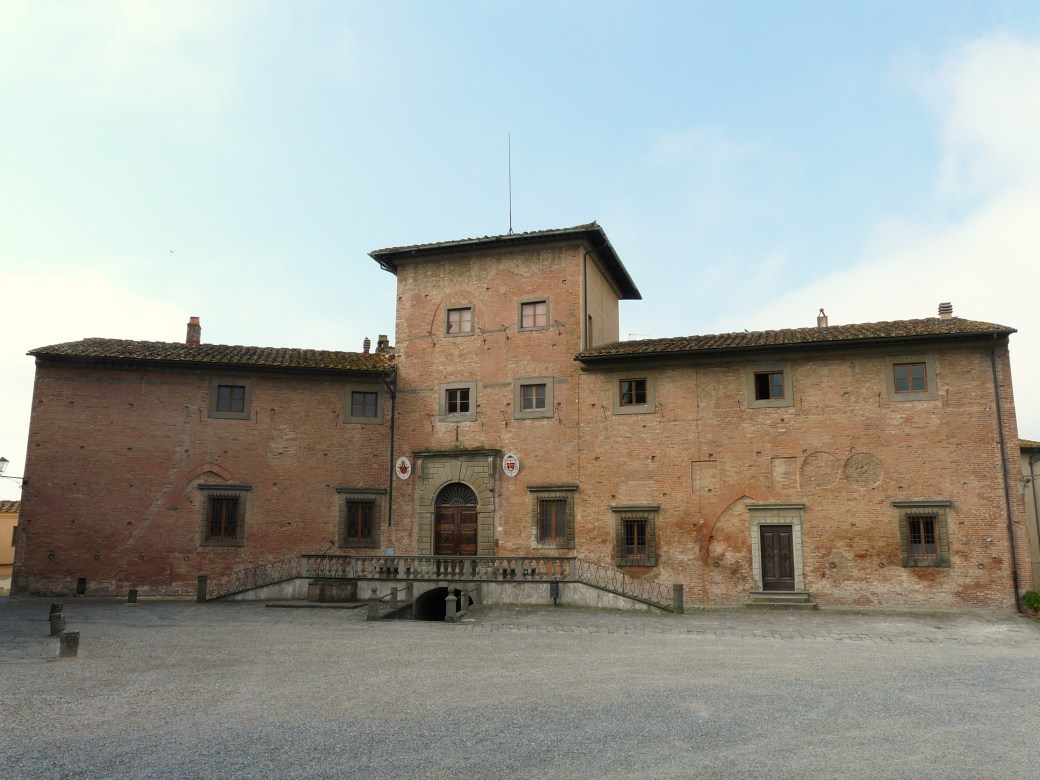 Palazzo Vescovile
Palazzo VescovileChurch of the Holy Crucifix
Built from 1705 to 1718 to preserve a 13th-century crucifix that was believed to be miraculous. The Church of the Santissimo Crocifisso is located in the historical centre of San Miniato, embraced by a grand 18th-century staircase and overlooking a terrace in the space between the Rocca, the Duomo and the town hall. Inside, one can admire frescoes that almost completely cover the walls, including many depicting scenes from the life of Christ by Anton Domenico Bamberini.
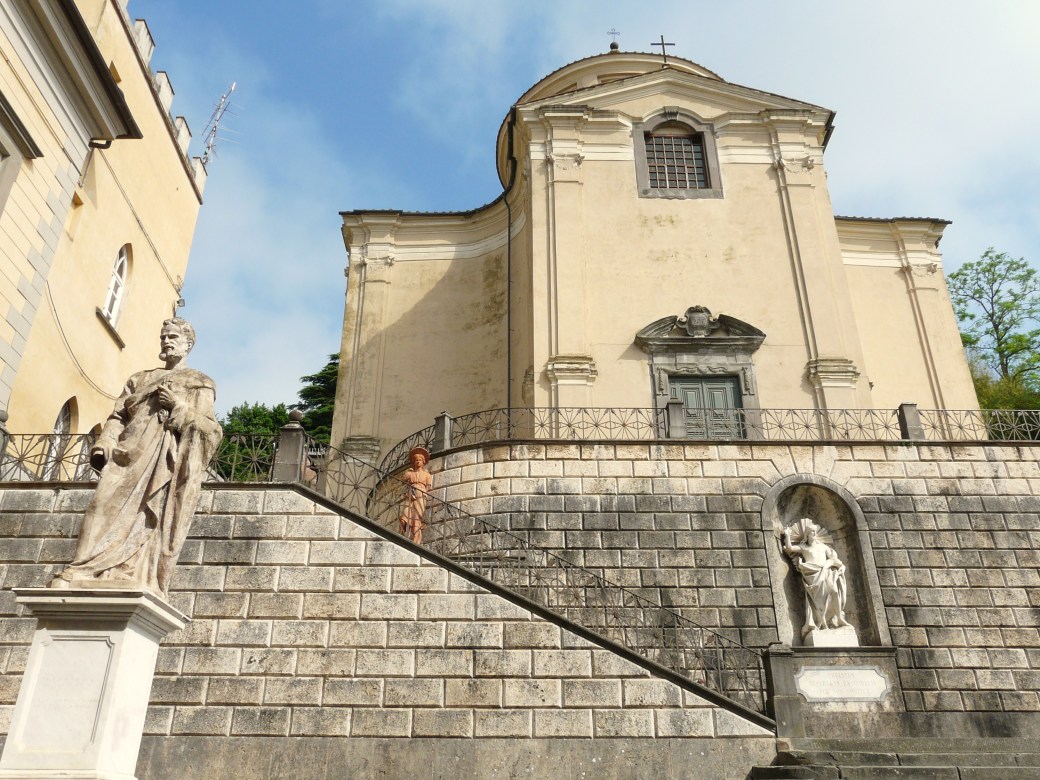 Chiesa del santissimo crocifisso
Chiesa del santissimo crocifissoMonastery of St Clare
Built of warm reddish-coloured bricks, it was founded in the 14th century and today houses the Conservatory of the same name and the Magistral School. A portal along the left side gives access to the church, which is in the appearance it acquired in the late 17th century, with a truss ceiling painted with small ornamental motifs, and three altars in pietra serena. The beautiful high altar panel with the Immaculate Conception surrounded by Adam, Eve, Moses, David, St. Paul and St. John the Baptist is by Jacopo da Empoli.
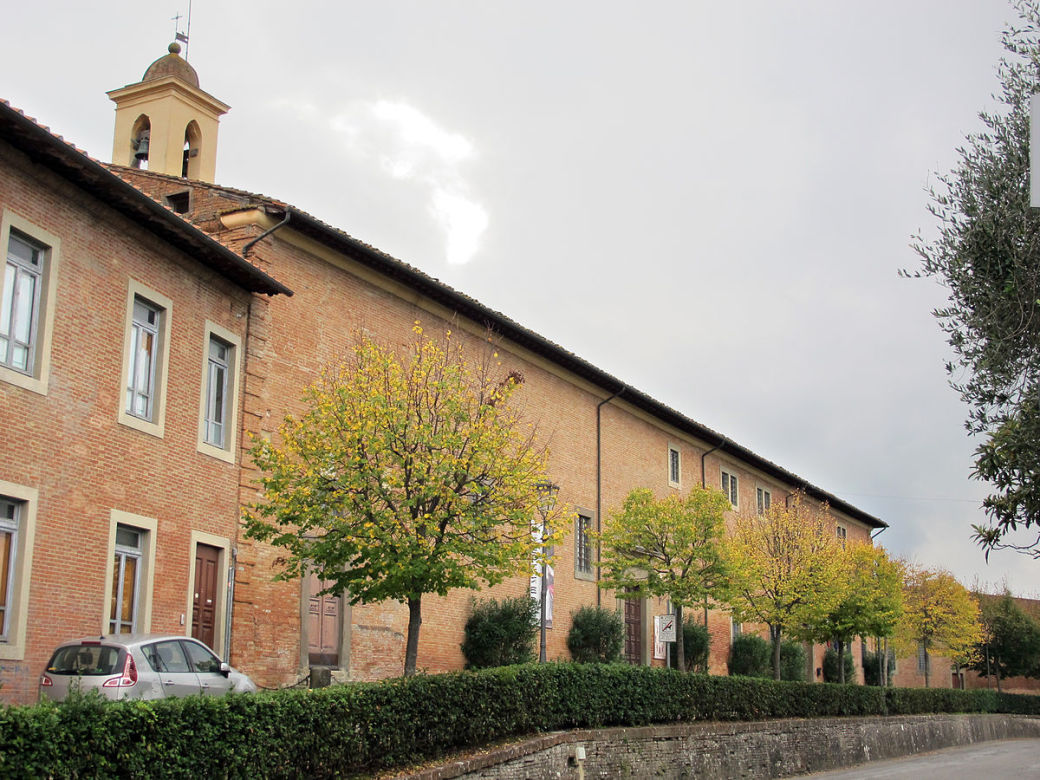 Monastero di Santa Chiara
Monastero di Santa ChiaraEpiscopal Seminary of San Miniato
Built around 1650 for the training of the clergy, the Bishop's Seminary building that dominates the surrounding area was constructed following the course of the ancient city walls. Outside, we can admire beautiful frescoes and Latin inscriptions.
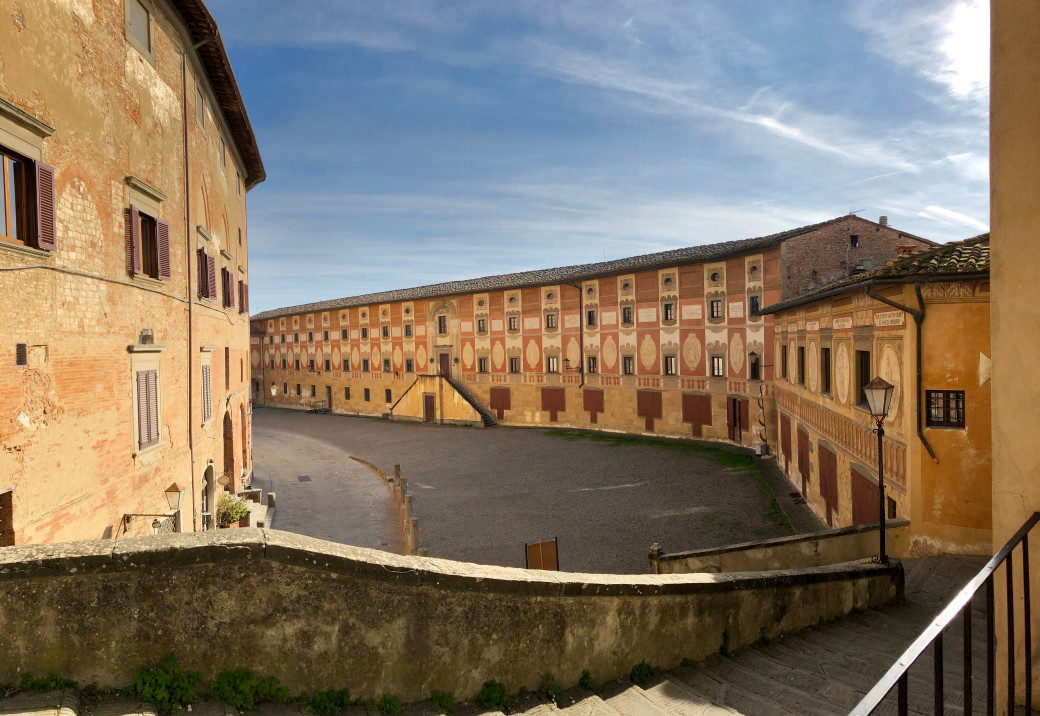 Piazza del seminario
Piazza del seminario Church of Saints Jacopo and Lucia
Visibly without a façade, the church of San Domenico has origins dating back to the 16th century. Over the centuries it has undergone many changes and restorations, including the beautiful cloister that is now occupied by the municipal library and the MU.ME, the museum of memory.
Municipal Palace and Loretino Oratory
Built around 1300 as the seat of the Lords Twelve Defenders of the People, a magistracy that administered the municipality of San Miniato. It originally comprised the Oratory of the Holy Crucifix and the meeting hall. It was renovated several times over the course of time, with interventions in the 18th and 19th centuries giving it its current appearance. In addition to housing the offices of the municipality, the Palace and the Oratory of the Loretino constitute one of San Miniato's Civic Museums, which preserve notable works of art that allow one to read the entire history of the city's civil institutions.
SAN MINIATO AND THE TRUFFLE
The truffle season, which runs from October to December (although the best ones are found in late October/November), makes the mouth water with anticipation for one of the most delicious foods ever, nicknamed 'the food of kings' by the ancient Romans. Apart from its famous elusive flavour, what makes it so attractive is the fact that it cannot be cultivated. San Miniato's most prized possession is celebrated at the annual San Miniato White Truffle National Market Exhibition organised by San Miniato Promozione, which aims to protect and above all promote the prized local tuber as a product of excellence. During the event, great prominence is also given to wine, the fruit of a long-standing local wine-growing tradition, the backbone of which today is represented by reds, in particular the DOCG Chianti (generic) or Chianti Colline Pisane, some Super Tuscans, and refined whites such as Bianco Pisano di San Torpè (also Vin Santo), Colli dell'Etruria Centrale, and Vin Santo del Chianti. What began as a modest one-day fair in 1969 has become an event of international scope, attracting exhibitors and visitors from all over Italy and beyond.
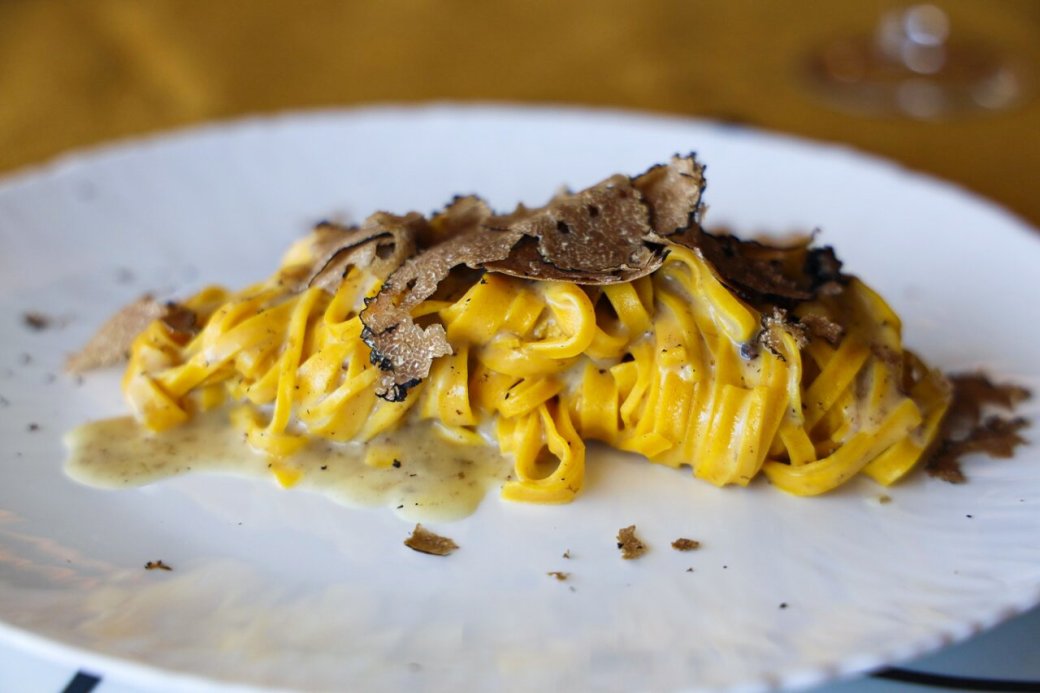 tagliolini al tartufo
tagliolini al tartufoWHERE TO BUY TRUFFLES:
A family business is Savini Tartufi (0587 628037/ www.savinitartufi.it), the same Savini who found the winning truffle in 2007. They sell truffles and truffle products (all made by them) at their premises in Montanelli, near Forcoli (Pisa). You can buy fresh truffles but also specialities such as the truffle hunter's award-winning sauce, truffle salt, truffle oil, rice with truffles and more. In season, Savini organises truffle dinners and truffle hunts twice a week. Another address to look out for is Tartufi Gemignani Francesco in Via Cimarosa, 58 in San Donato, tel. 0571.32821 and 328.9748273. Tartufi Nacci has been trading in white truffles for three generations, directly taking care of truffle hunting with its dogs. The outlet is the Enotartufoteca in Corazzano (0571 409528 and 338.8967807 www.tartufi-nacci.com).
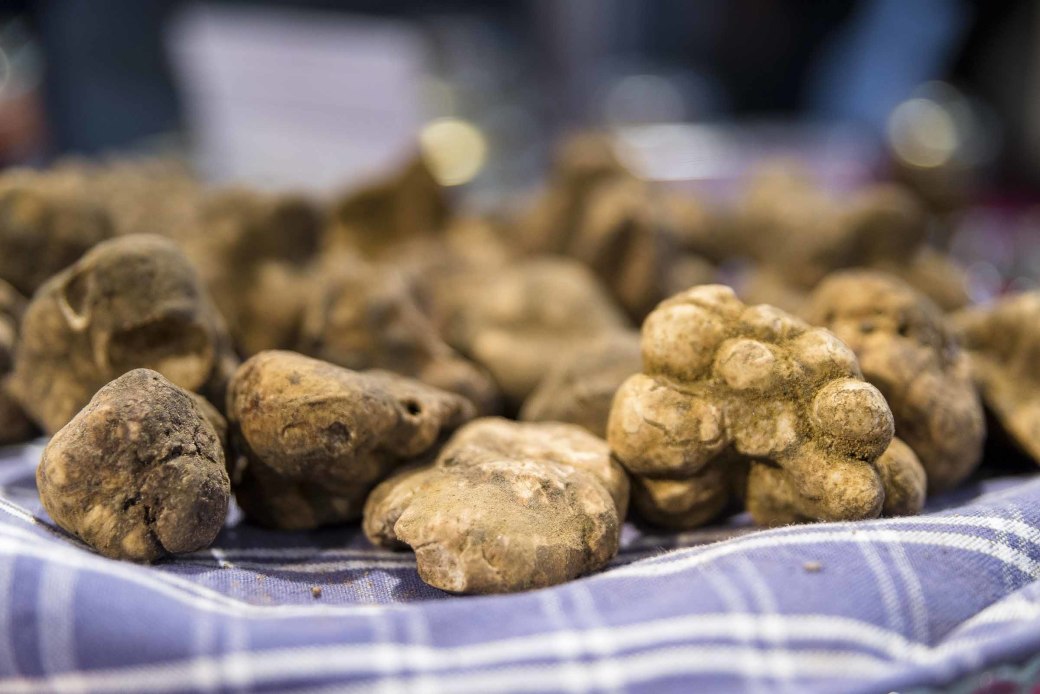 Mostra Mercato del Tartufo Bianco
Mostra Mercato del Tartufo BiancoWHERE TO EAT IN SAN MINIATO:
TRUFFLE EXPERIENCE OF SAVINI TARTUFI
Piazza D'Ascanio Loc. MONTANELLI - FORCOLI (PISA)
ph. +39 0587 628037
Not a real restaurant, but a truffle experience that fascinates young and old alike. What Savini Tartufi proposes is a total immersion in the mysterious world of truffles, tasting delicacies paired with selected local wines. You can choose between the 4-hour tour Discovering the Truffle where you retrace the milestones of the Savini family's history related to the truffle. Then we move on to the forest together with the truffle dog. The relationship created between the truffle hunter and his faithful companion will leave you spellbound. The tour culminates with a tasting lunch of fresh seasonal truffles and Savini Tartufi products. A tutto tartufo is instead the 5-hour tour that combines truffle hunting with a chef-led cooking class. In addition to the first tour, all participants receive a complimentary Savini Tartufi work kit (headgear and apron) and can share the work in the kitchen. Otherwise, it is also possible to do the truffle tasting. A single Truffle Experience from lunch to snack to dinner; an opportunity not to be missed for those who do not want to deprive themselves of a taste/emotional journey worthy of note.
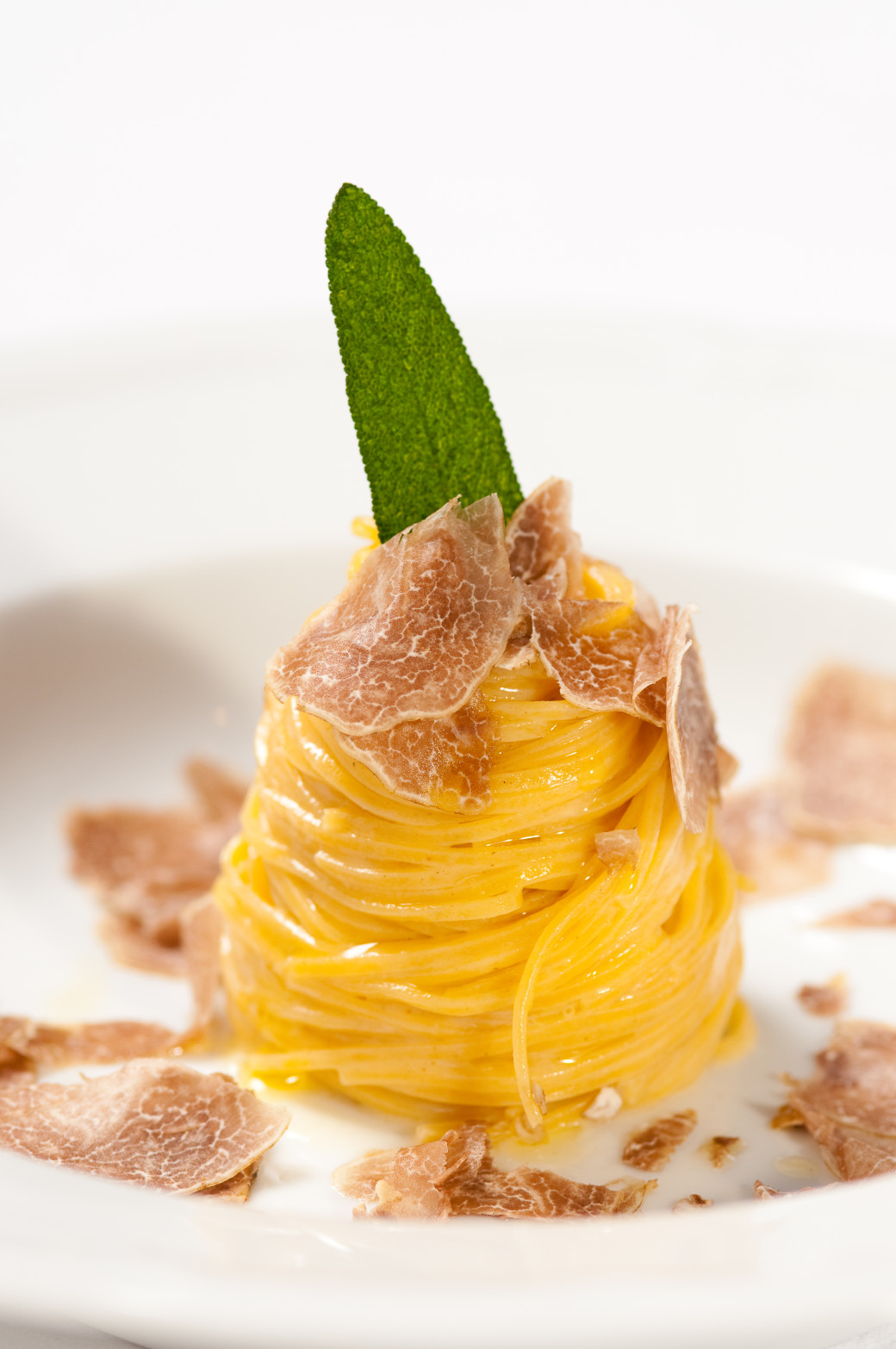 Savini tartufi
Savini tartufiPapaveri & Papere
Via Dalmazia, 159
ph. +39 0571 409422
Due imprenditori, Giuliano e Gabriele Mannucci, ed un ristoratore Paolo Fiaschi, nel 2009 decidono di dare vita a Papaveri e Papere, piccolo ristorante immerso nelle campagne Toscane. Il ristorante conduce una costante ricerca in cucina, con l’obiettivo di trovare il giusto equilibrio tra la tradizione e l’innovazione contemporanea, utilizzando gli ingredienti tipici della cucina toscana. L’arredamento, in linea con la sua filosofia culinaria, rende l’atmosfera nelle due sale calda e moderna allo stesso tempo. Nel periodo estivo è possibile mangiare in veranda, immersi nel verde della Valdegola, patria del Tartufo Bianco delle Colline Sanminiatesi.
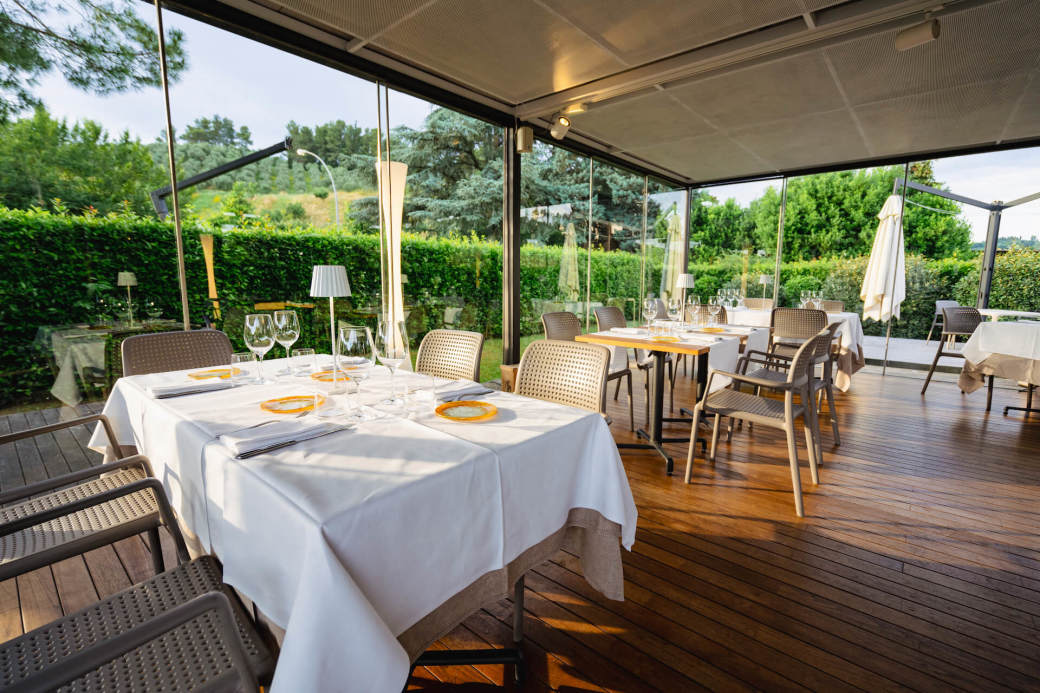 Papaveri e Papere
Papaveri e PaperePepenero
Piazza del Duomo, 4
ph. +39 0571 520282
A chic, modern restaurant in the historic centre with a panoramic terrace where chef Gilberto Rossi offers a creative version of traditional local dishes. The restaurant's typical products are those of the San Miniato area: the white truffle, the flavours of the vegetable garden and all seasonal and other products.
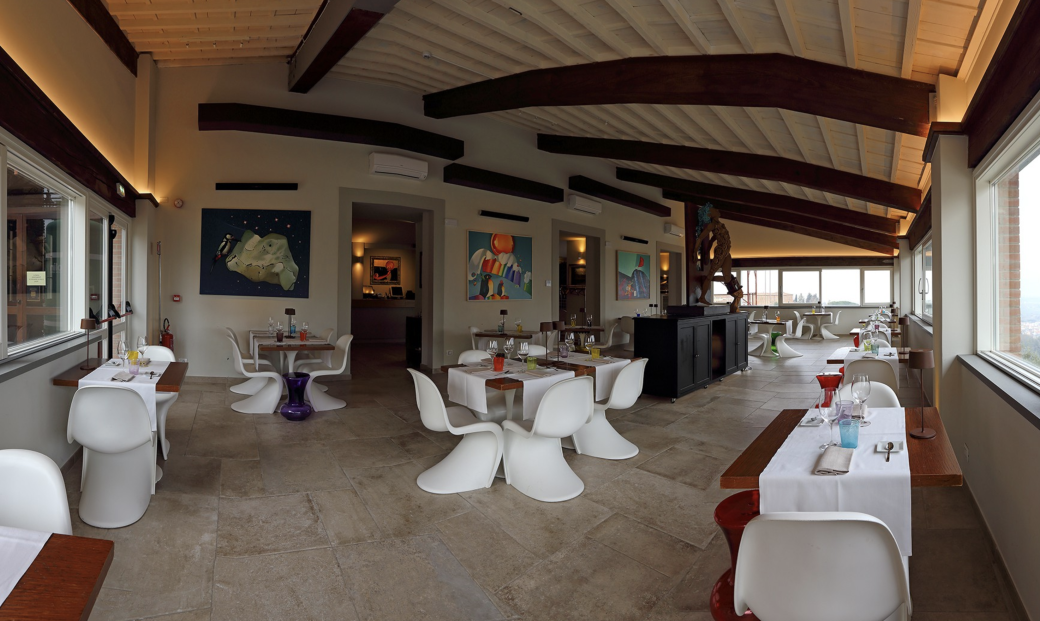 Ristorante Pepenero
Ristorante PepeneroIl Convio
Via S. Maiano, 2
ph. 39 0571 408113
If you prefer a more rustic venue, try Il Convio located in an old farmhouse south of San Miniato. Here, too, the truffles are served in generous portions and in dishes that are as mouth-watering as each other.
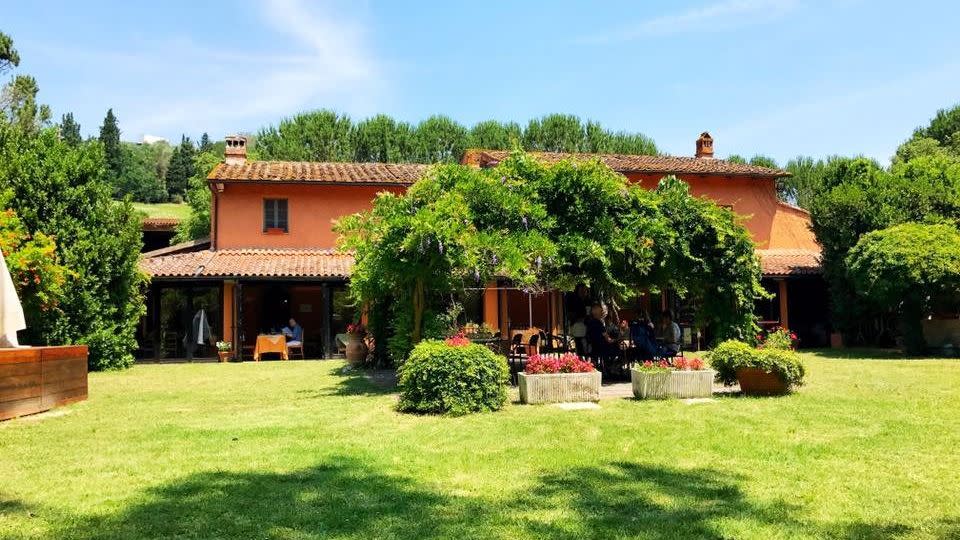 Il Convio
Il ConvioAntico Ristoro Le Colombaie
Via Giuseppe Montanelli, 22
ph. +39 0571 484220
Framed by a warm country barn overlooking San Miniato, where chef Daniele Fagiolini welcomes guests with traditional dishes reinterpreted with contemporary appeal. Tuscan cuisine characterised by a mix of seasonal, healthy and quality products where simplicity and authenticity are the basis of a quality gastronomic experience.
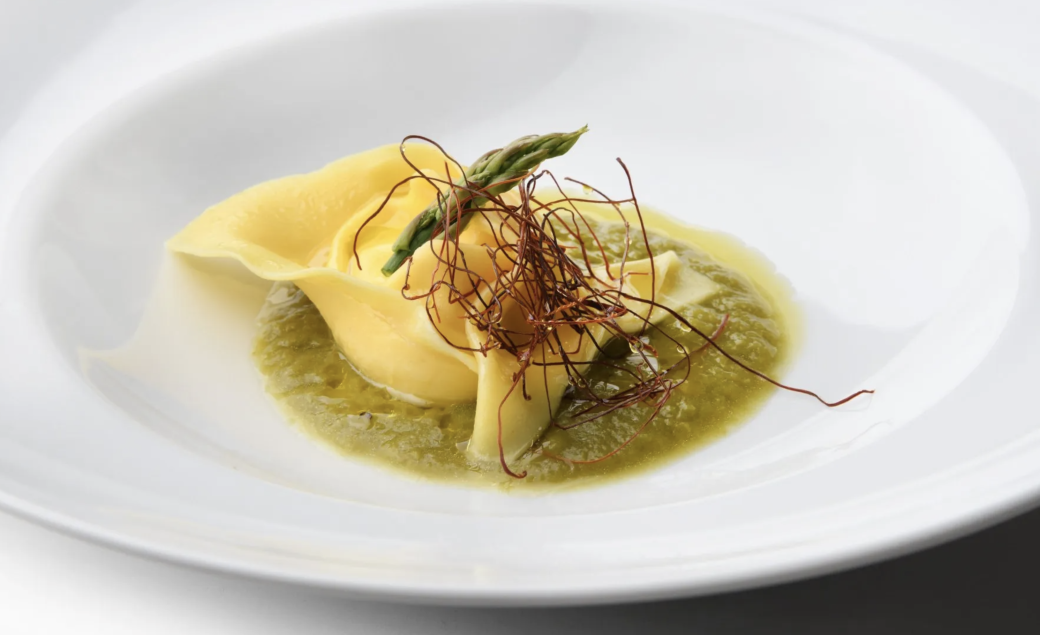 Antico Ristoro Le Colombaie
Antico Ristoro Le ColombaieRistorante Maggese
Via IV Novembre, 29
ph. +39 0571 1723546
A restaurant with a gastronomic heart that combines distant traditions with the modernity of its dynamic service and dishes that are as simple as they are surprising. A complete cuisine, rich in taste and ethical sense, for all lovers of good food.
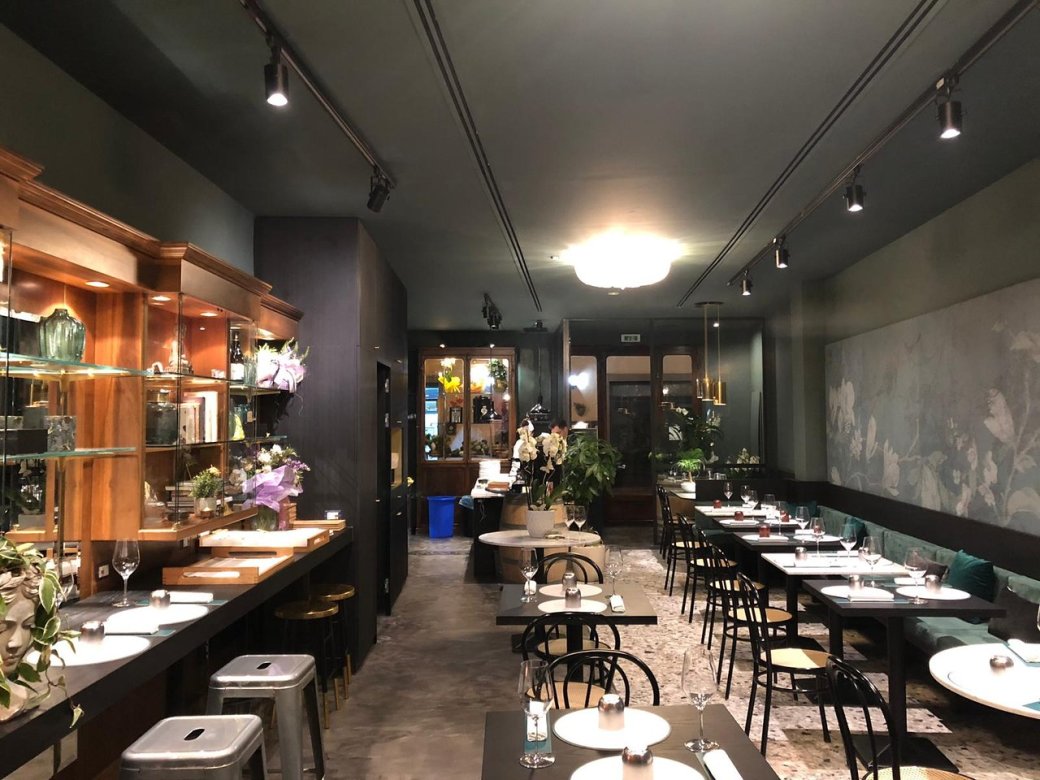 ristorante maggese
ristorante maggeseHOW TO GET TO SAN MINIATO:
From the A1 motorway (Autostrada del Sole), exit at Firenze Scandicci and take the Firenze-Pisa-Livorno (FI-PI-LI) trunk road after a short junction. Exit at San Miniato.
From the A12 motorway, take the Collesalvetti exit and, after a short link road, take the Firenze-Pisa-Livorno (FI-PI-LI) main road. From the north, take the Pisa-centro exit and after a short link road, take the Firenze-Pisa-Livorno (FI-PI-LI) main road. Exit at San Miniato.






